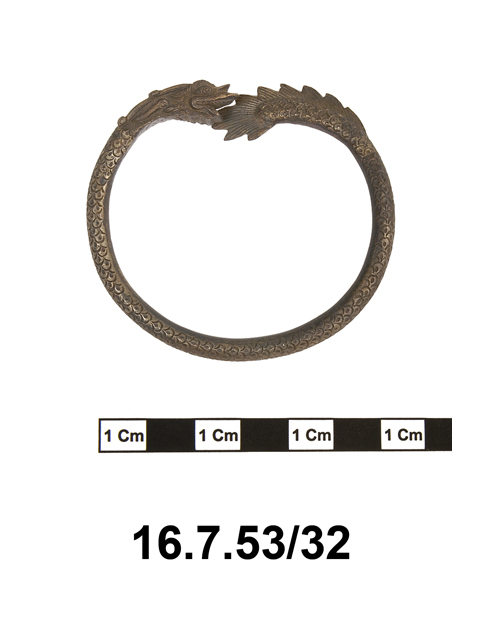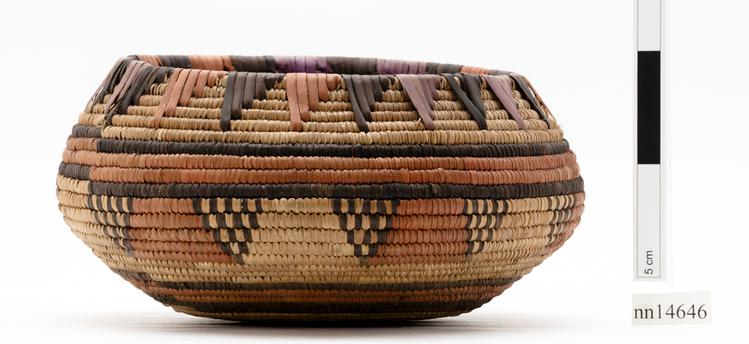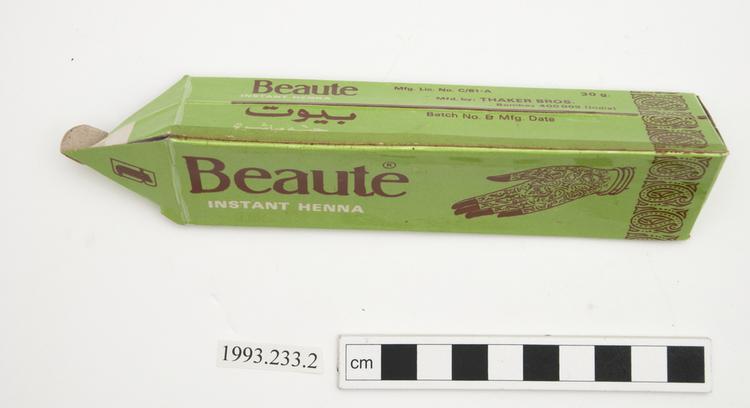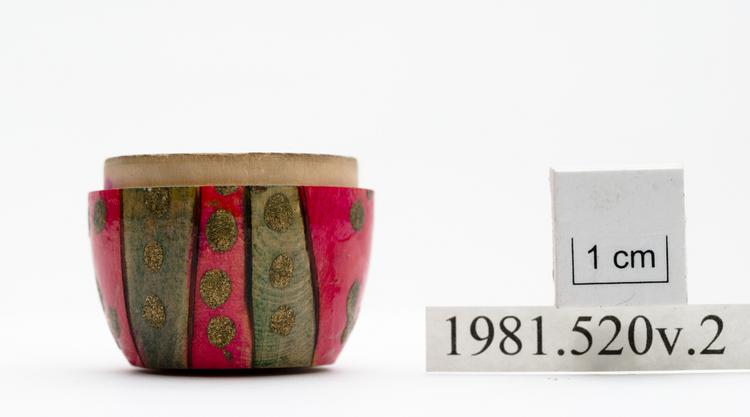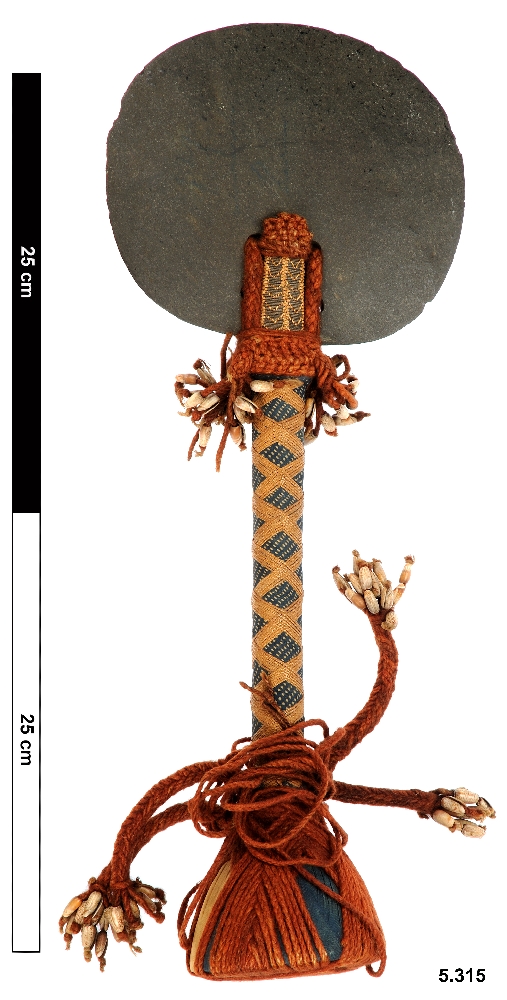
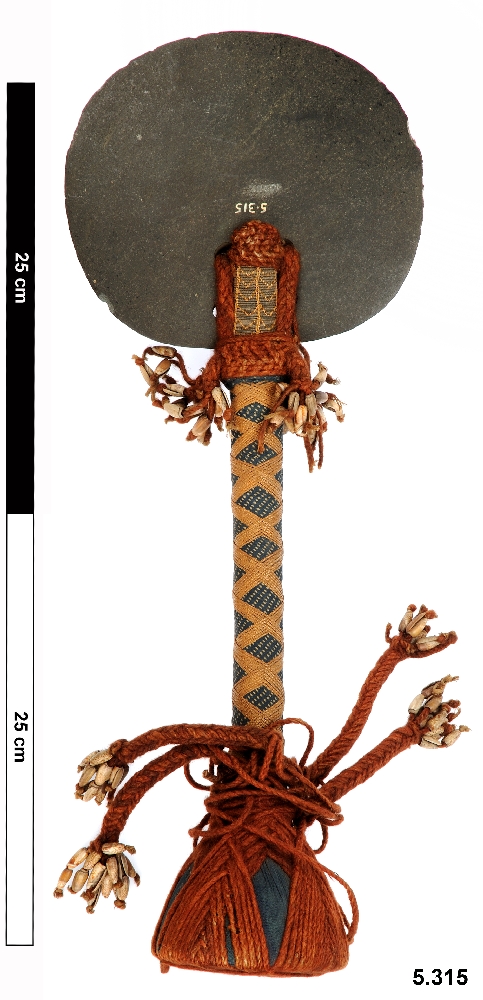
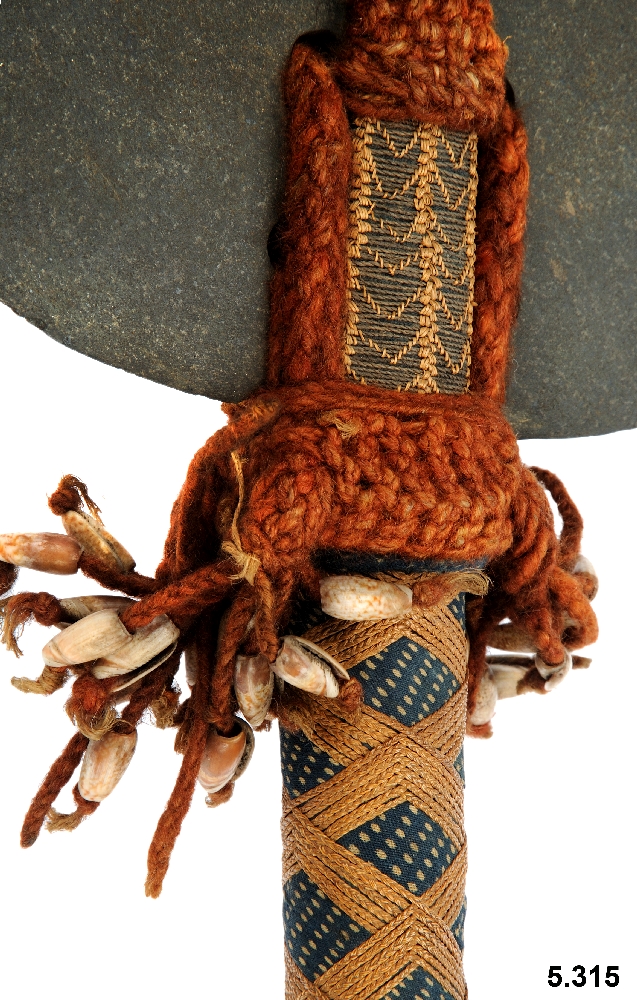
Ceremonial axe with a wooden shaft and a broad, conical pommel. The shaft is covered in trade textiles and a woven decorative binding of wool. White shells are attached with a woollen cord. The discoidal greenstone head is perforated at the bottom and attached to a socket in the shaft with woollen cordage.
Ceremonial Axe-Club, Gi O Kono, Kanak People, New Caledonia, Southern Melanesia. Although its heavy greenstone head is ground as flat as a discus and comes to a sharp edge, the Kanak name for these axe-like objects translates as ‘green club’. Their painstakingly ground blades are lashed to the coconut-wood handle with slender ropes of strong coconut-fibre, which are further enhanced with a reddish-brown yarn spun from the fur of the Rock Flying Fox (Pteropus macmillani). Sometimes the broad pedestal-pommel of the stone club is formed from a halved coconut which has seeds inserted beneath its trade fabric wrapping to also make the club an effective rattle. In this example, the handle is carved from a solid piece of wood. Some scholars have suggested that the stone heads were manufactured in the southwestern uplands of Grande Terre island, and then shipped eastwards to the Loyalty Islands for hafting and binding, before being shipped back to the big island for ceremonial use. Little is known for certain of the gi o kono’s original purpose. Closely associated with their makers, they were stored with other precious ancestral treasures in a basket of valuables under the care of the senior living members of each Kanak lineage. They were brought out on ceremonial occasions when the ancestors were being venerated by having their lineages recited, and they were called upon to lend their power when rain-making ceremonies were performed during droughts. Later in the 19th Century, these objects became popular presentation items for Kanak chiefs to give to the colonial officers of the French state. Stone, wood, vegetable fibre, bat wool. Mid-19th Century. Formerly in the private collection of Mr. F. Smith.
fighting



